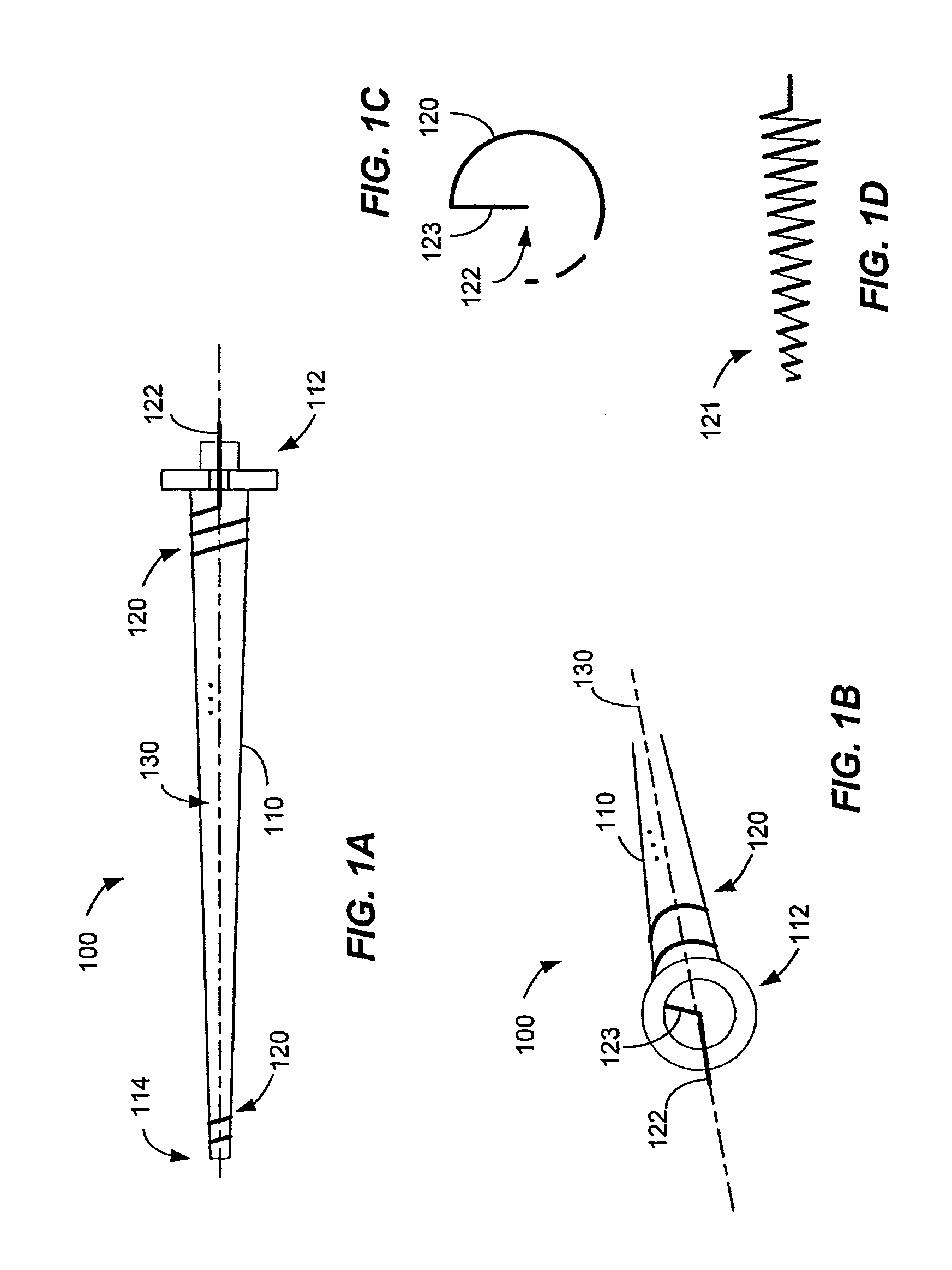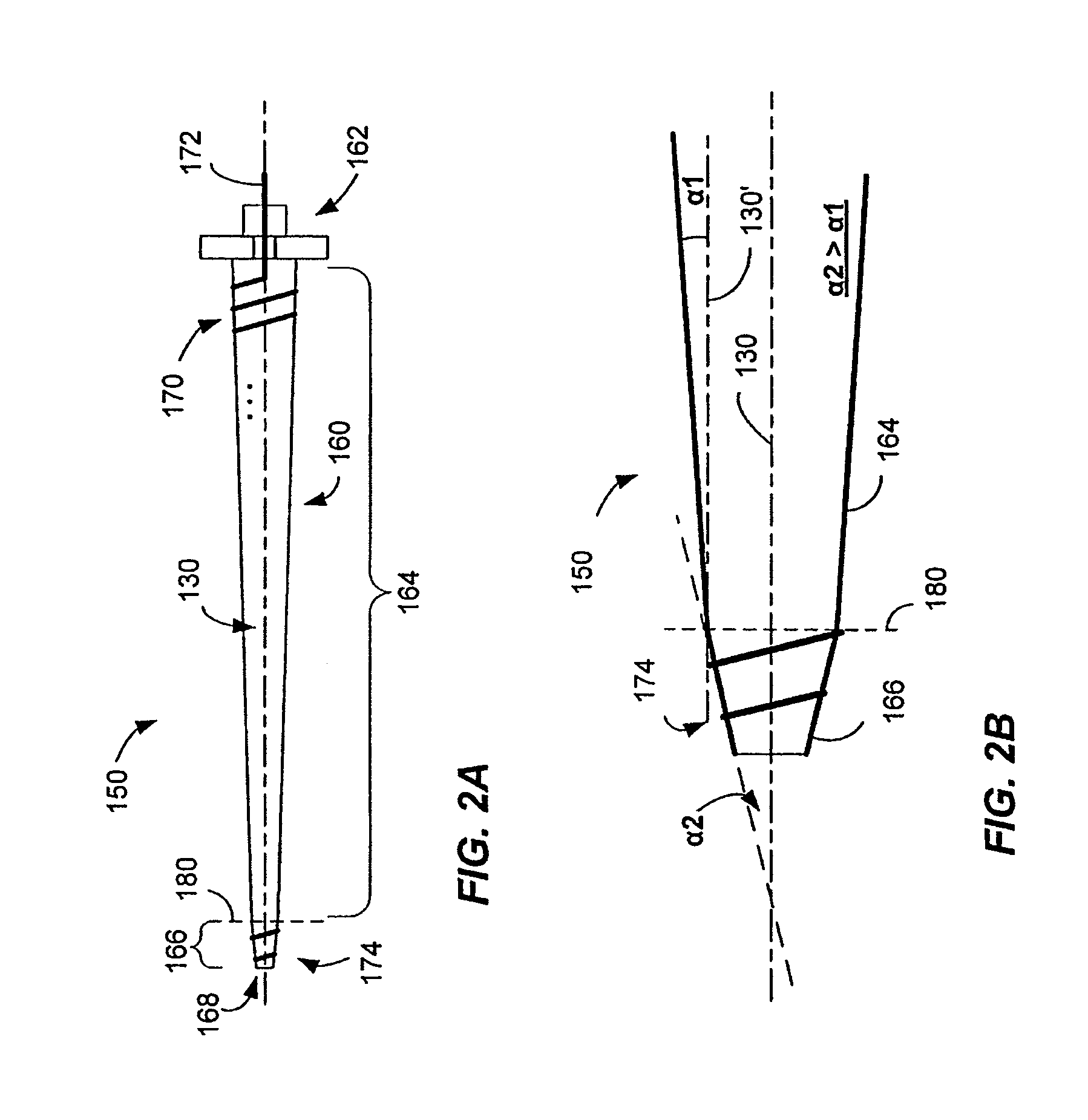Rotation-independent helical antenna
a helical antenna, rotation-independent technology, applied in the direction of antennas, non-resonant long antennas, electrically long antennas, etc., can solve the problems of adversely affecting the performance of antennas, not being able to freely spin about the axis, time-consuming and one-rou, etc., to achieve the effect of improving the axial ratio
- Summary
- Abstract
- Description
- Claims
- Application Information
AI Technical Summary
Benefits of technology
Problems solved by technology
Method used
Image
Examples
Embodiment Construction
[0028]A helical antenna is provided that can be rotated or spun about its central axis (or “clocked”) to adjust its phase without requiring relocation of the antenna or components that couple to the antenna as a result of the clocking. Although, the phase changes with rotation, the amplitude of the antenna is substantially independent of its rotation about its central axis. The helical antenna includes an electrical conductor formed about the central axis, and includes a base end and a distal end. The rotational freedom of the antenna is accomplished by, for example, disposing or forming a feed line at the base end of the antenna and along the central axis. The feed line couples to a transmission path, through a ground plane, to allow signals to be provided to the coil for radiation or signals received by the coil to be provided to signal processing modules. The helical antenna may be a free standing helical coil, or the coil may be wound around a dielectric core, such as, for examp...
PUM
 Login to View More
Login to View More Abstract
Description
Claims
Application Information
 Login to View More
Login to View More - R&D
- Intellectual Property
- Life Sciences
- Materials
- Tech Scout
- Unparalleled Data Quality
- Higher Quality Content
- 60% Fewer Hallucinations
Browse by: Latest US Patents, China's latest patents, Technical Efficacy Thesaurus, Application Domain, Technology Topic, Popular Technical Reports.
© 2025 PatSnap. All rights reserved.Legal|Privacy policy|Modern Slavery Act Transparency Statement|Sitemap|About US| Contact US: help@patsnap.com



